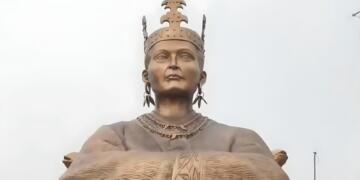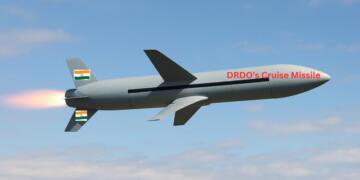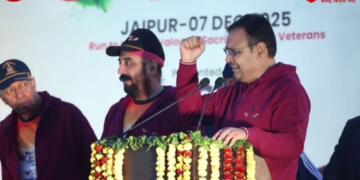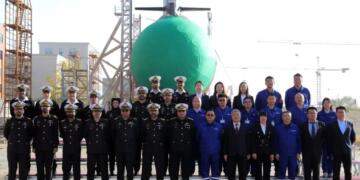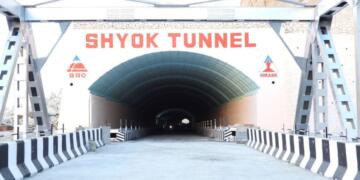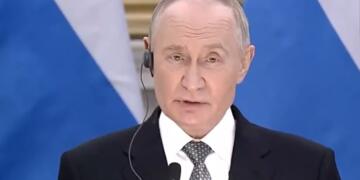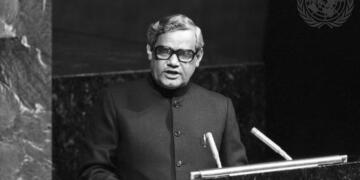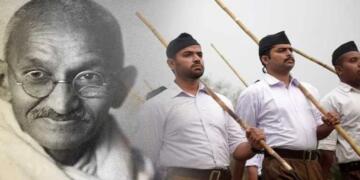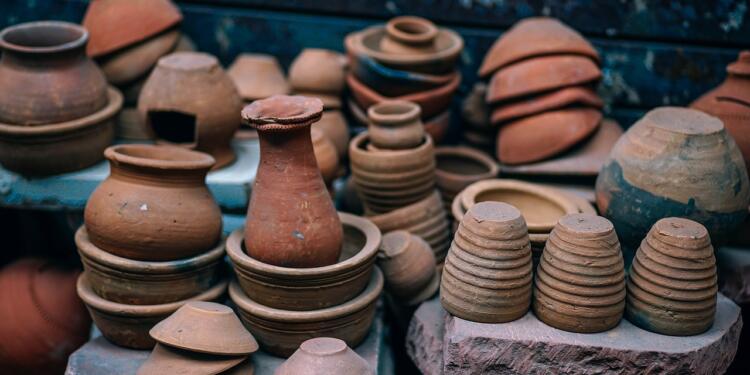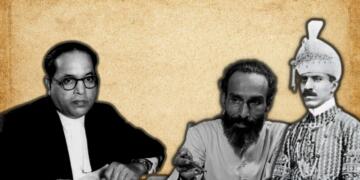India’s freedom struggle was a monumental chapter in the nation’s history, marked by decades of resilience, sacrifice, and hope. While political leaders and revolutionaries played crucial roles in the fight for independence, the story of India’s journey to freedom was also captured and propagated through art and literature. From evocative paintings to powerful poems, art and literature served as tools of resistance, inspiration, and national awakening, uniting millions in their quest for independence. Join https://elook.org/en-bd/casino/glory/ and let’s explore how art and literature became a driving force in India’s freedom struggle.
The Role of Literature in the Freedom Struggle
Poetry as a Tool of Inspiration
Poetry was one of the most powerful literary forms during India’s freedom struggle. Indian poets used their words to inspire the masses, instill a sense of patriotism, and mobilize people to join the movement. Rabindranath Tagore, who became the first non-European to win the Nobel Prize for Literature in 1913, wrote the iconic poem “Where the Mind is Without Fear”, envisioning a free and united India. His work not only inspired Indians but also highlighted the spirit of freedom to the world.
Subramania Bharati, a Tamil poet, was another significant literary figure whose revolutionary poetry instilled courage and hope. His works called for an end to oppression and inspired people to rise against colonial rule. Bharati’s words spoke of unity, equality, and the dream of an independent India.
Nationalist Novels and Stories
Novels and short stories also played a key role in spreading nationalist sentiments among the masses. Bankim Chandra Chattopadhyay’s novel “Anandamath” (1882) became a source of inspiration for freedom fighters, as it contained the iconic song “Vande Mataram”, which went on to become a rallying cry for the independence movement. The book depicted the struggle of a group of ascetics against oppressive forces, symbolizing the fight against colonial rule.
Munshi Premchand, one of India’s most celebrated writers, used his stories to depict the struggles of the common man under British rule. His works highlighted the social and economic challenges faced by the Indian rural population, providing a realistic portrayal of the hardships brought about by colonial exploitation. Through his stories, Premchand painted a vivid picture of the need for social reform and independence.
Journalism and Freedom of Expression
Journalism was another critical avenue through which the voices of the freedom movement were amplified. Newspapers like “Young India” and “Harijan”, published by Mahatma Gandhi, played a significant role in spreading awareness about the atrocities of British rule and encouraging non-violent resistance. Bal Gangadhar Tilak used his newspaper “Kesari” to reach the masses, inspiring them to fight for their rights and take pride in their culture and heritage.
Writers and journalists who dared to criticize colonial rule faced arrests, censorship, and even exile. Despite the risks, they continued to use their pens as weapons in the struggle for freedom, demonstrating the power of words in the fight against oppression.
The Influence of Art in the Freedom Movement
Patriotic Paintings and Visual Art
Visual art served as a potent medium to express the aspirations of a nation longing for freedom. Raja Ravi Varma, one of India’s most renowned painters, depicted Indian mythological themes that resonated with cultural pride and heritage. His art celebrated Indian traditions at a time when colonial influence threatened to erode the country’s cultural identity.
Abanindranath Tagore, a prominent artist and the nephew of Rabindranath Tagore, played a crucial role in creating a distinct Indian visual identity. His painting “Bharat Mata” (Mother India) became an iconic image that symbolized the nation as a nurturing mother, inspiring feelings of devotion and patriotism. The painting showed Bharat Mata holding a book, sheaves of rice, and a piece of white cloth, symbolizing knowledge, prosperity, and peace.
Kalighat Paintings and Satirical Art
Kalighat paintings, which originated in Calcutta (now Kolkata), also played a role in the freedom struggle. These paintings, created by local artists, often depicted scenes from mythology, as well as satirical depictions of British officials. The artists used their work to subtly criticize colonial rulers and express support for the nationalist movement. This form of visual protest connected with the common people, making art an accessible means of expressing dissent.
Posters and Freedom Movement Symbols
Posters and illustrations were powerful tools for spreading the message of independence. Symbols such as the charkha (spinning wheel), which became synonymous with Mahatma Gandhi’s call for self-reliance, were depicted in countless posters and artworks. The charkha symbolized economic independence and resistance to British goods, encouraging people to spin their own clothes and boycott foreign products.
Artists also created images of key freedom fighters, such as Bhagat Singh, Sardar Vallabhbhai Patel, and Jawaharlal Nehru, to inspire and mobilize the masses. These images helped build a visual narrative of the freedom struggle, ensuring that the leaders of the movement became household names across the country.
Theatre and Performance Arts in the Freedom Struggle
Street Plays and Dramas
Theatre was another influential medium used to spread the message of independence. Street plays and dramas were performed in public spaces to educate and inspire the masses. These plays often depicted the struggle against British rule, highlighting the injustices faced by Indians and motivating people to join the freedom movement. Street theatre was an effective way to reach illiterate audiences, using powerful storytelling to communicate complex political ideas in an engaging and accessible manner.
Kavi Sammelans (poetry gatherings) and mushairas (poetic symposiums) were also used as platforms to recite patriotic poetry that stirred emotions and inspired resistance. These performances brought together people from different backgrounds, united by a common desire for freedom and justice.
Folk Art and Regional Performances
Folk art and regional performances played a significant role in mobilizing rural communities. Forms like Tamasha in Maharashtra, Jatra in Bengal, and Nautanki in northern India were used to communicate nationalist messages to rural audiences. These performances were rich in symbolism and used humor, music, and dance to highlight the evils of colonial rule and the importance of unity and self-reliance.
The Role of Women in Art and Literature During the Freedom Struggle
Sarojini Naidu: The Nightingale of India
Sarojini Naidu (1879–1949), also known as the Nightingale of India, was a prominent freedom fighter and poet. Her poetry reflected her love for India and her desire for freedom. Naidu’s eloquence in both her poetry and her speeches inspired countless individuals to join the struggle for independence. Her collection of poems, including “The Golden Threshold”, expressed themes of patriotism, love, and the beauty of India.
Kamala Das and Amrita Pritam
Writers like Kamala Das and Amrita Pritam also contributed to the literary landscape during the freedom struggle. Their works touched upon themes of identity, nationalism, and the struggles faced by women in a patriarchal society. Their writings highlighted the intersectionality of gender and national oppression, giving a voice to the experiences of women during the freedom movement.
Impact of Art and Literature on the Freedom Struggle
Fostering a Sense of Unity
Art and literature played a crucial role in fostering a sense of unity among Indians. At a time when the country was divided by regional, linguistic, and religious differences, literature, poetry, and visual art provided a common ground for people to connect. The works of writers and artists transcended these differences, uniting people under the banner of independence and creating a collective national identity.
Creating a Vision for a Free India
Art and literature were instrumental in creating a vision for a free India. They not only highlighted the injustices of British rule but also painted a picture of what a free and prosperous India could look like. The idea of Swaraj (self-rule), popularized by Mahatma Gandhi, was echoed in the writings, paintings, and performances of the time, motivating people to work towards realizing that vision.
Encouraging Non-Violent Resistance
The influence of Mahatma Gandhi’s philosophy of non-violence (ahimsa) was evident in the literature and art of the time. Writers, poets, and artists used their work to promote the idea of peaceful resistance, encouraging people to participate in non-violent protests, boycotts, and civil disobedience. The power of words and images in shaping public perception and mobilizing masses for peaceful resistance cannot be understated.
Conclusion: The Legacy of Art and Literature in India’s Freedom Struggle
The story of India’s freedom struggle is not just a political narrative; it is also a story of the arts—of words, images, and performances that inspired, united, and empowered an entire nation. Art and literature served as powerful tools of resistance, providing a voice to the voiceless and keeping the spirit of freedom alive even in the darkest times.
The contributions of poets, writers, artists, and performers continue to resonate in modern India, reminding us of the role of creativity in bringing about social change. The legacy of art and literature in the freedom struggle serves as a testament to the power of cultural expression in the fight for justice, equality, and freedom.





